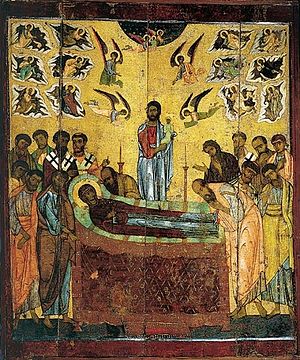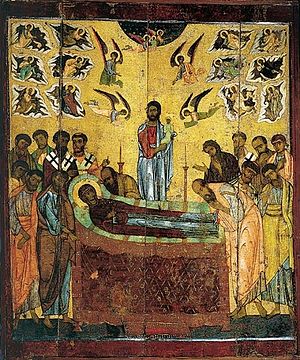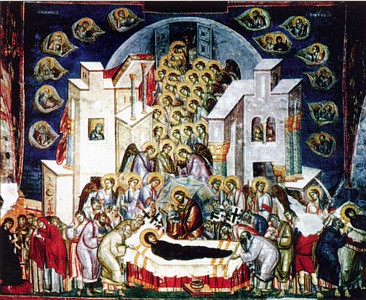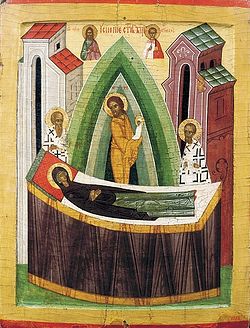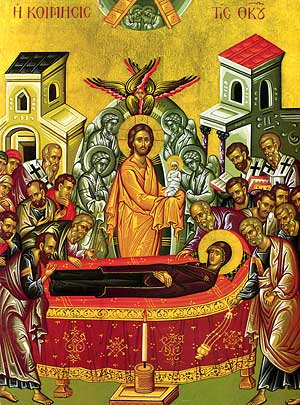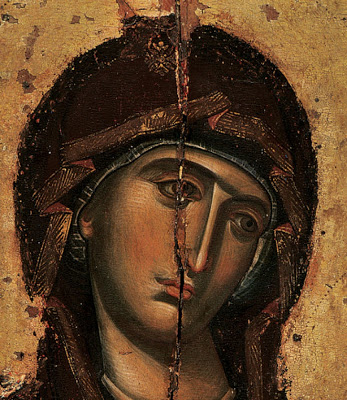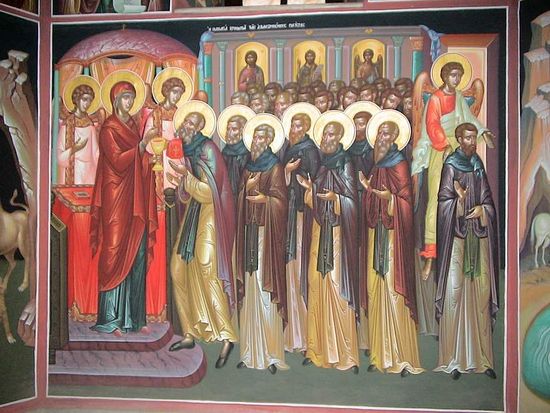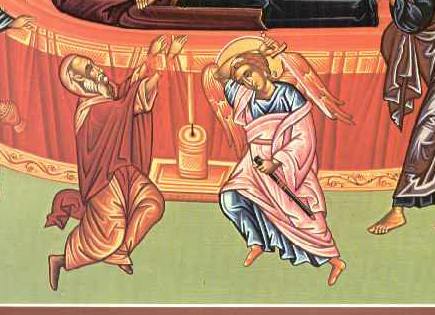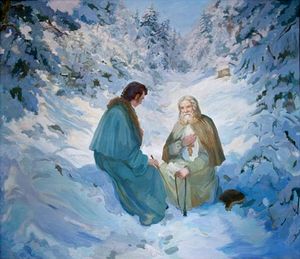The Dormition of the Mother of God. Early eighth century, Novgorod.
After the Lord’s Ascension, the Mother of God remained under the care of the Apostle John the Theologian, and when he was absent, she lived in the house of his parents, near the Mount of Olives. For all the Apostles and all the faithful, she was a consolation and edification. Talking with them, the Mother of God told them of the wondrous events of the Annunciation, the conception without seed, and her birth of Christ without corruption, His childhood and earthly life. Like the Apostles, she instructed and strengthened others in the Christian Faith by her very presence, words, and prayers. The Apostles’ reverence for the Most Holy Virgin was extraordinary. Upon receiving the Holy Spirit on the remarkable day of Pentecost, they remained in Jerusalem for about ten years, serving for the salvation of the Jews and wishing to see and hear her divine words as often as possible. Many of the newly-enlightened in the faith even came from distant lands to Jerusalem in order to see and hear the Most Pure Theotokos.

